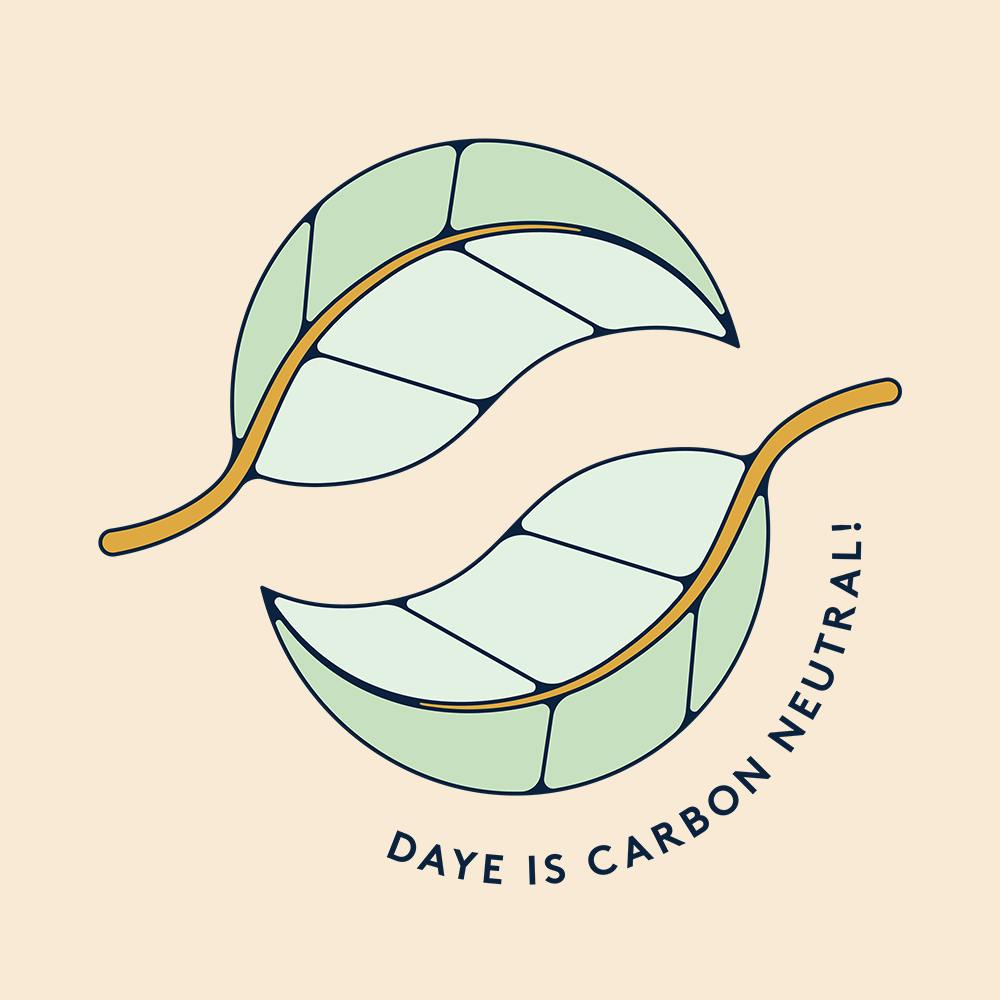Table of contents
1. When it comes to environmentally friendly products, there is a lot of eco jargon to unpack – ‘carbon neutral’ being one of those terms.
2. What is carbon neutrality?
Illustrated by Erin Rommel
When it comes to environmentally friendly products, there is a lot of eco jargon to unpack – ‘carbon neutral’ being one of those terms.
The lack of education and awareness around sustainability means terms like ‘carbon neutral’ and ‘carbon offsetting’ can be difficult to decode.
Here, we explain what it means to be carbon neutral, and how we offset our carbon footprint at Daye.
What is carbon neutrality?
In a nutshell, ‘carbon neutrality’ is achieved by calculating your carbon emissions (aka your carbon footprint) and then balancing them out, in a bid to make up for them.
What is a carbon footprint?
Your carbon footprint is all the carbon dioxide (CO2) you produce day-to-day. Almost everything you do releases carbon dioxide into the atmosphere – from the food you eat, to how often you travel. You can calculate your carbon footprint online, just search “carbon footprint calculator”.
Reducing our carbon footprint is incredibly important because carbon dioxide, along with other greenhouse gases, is a major cause of global warming.
In a perfect world we would all have no carbon footprint, but that’s pretty much impossible. The next best thing is to try to reduce your carbon footprint through everyday lifestyle changes, and through carbon offsetting.
There are different ways you can offset your carbon emissions, but the most common is by supporting carbon offset projects, which aim to reduce the impact of greenhouse gas emissions.
This is usually done by donating to organisations and charities that plant trees or invest in energy efficiency.
Anyone can offset their carbon footprint, whether they’re an individual or business.
How we offset carbon emissions at Daye
To eliminate our products’ carbon footprint, we partnered with Climate Partner and support their climate action efforts.
Every year, Climate Partner measures the carbon footprint of Daye products, (including raw materials, manufacturing, transportation, travel, and operations) and helps us offset our emissions by funding a clean drinking water project in Eritrea.
Daye’s pledge toward carbon neutrality
Too often, the burden of sustainability falls on the consumer, but at Daye we believe manufacturers and brands have a corporate responsibility towards the environment and actively reducing their carbon footprint.
Carbon neutrality is a way for businesses to show corporate responsibility and hold themselves accountable for the carbon they emit, and invest in projects that neutralise their footprint. Think of it as a self-imposed eco tax, if you will.
Our mission at Daye has always been to leave an impact, not a trace. We’re working hard to cut our emissions as much as possible, and a lot of Daye’s R&D efforts focus on finding more sustainable solutions – from reducing the use of plastic in our supply chain, to improving the life-cycle of our packaging.
It may take us a while to get there, but in the meantime, that’s where carbon offsetting comes in.






